Fendt unveils long-awaited Gen5 800-series Vario tractors
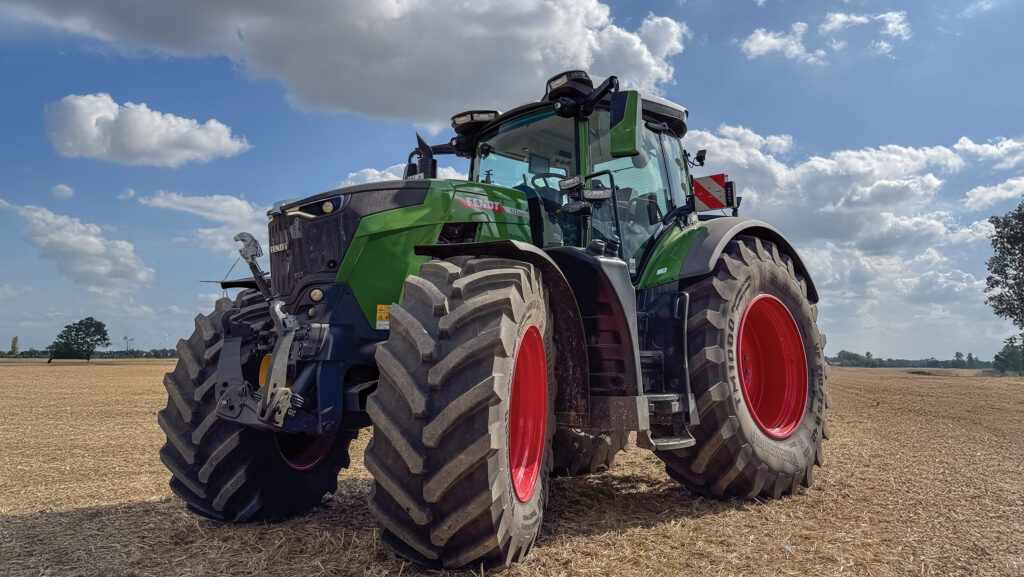 © Adam Clarke
© Adam Clarke Fendt has injected new life into its 800-series tractors, most notably with a switch of engine supplier that should put an end to the mechanical maladies that have plagued S4 iterations.
It’s the latest in the firm’s steady run of range revamps, and long overdue given the last major update to the 800s was in 2014.
See also: First impressions: New £250,000 Fendt 728 lands on UK soil
To reverse their fortunes, last week Fendt launched its three-strong, fifth-generation line-up that retakes the slot between the nimbler 700s and heavier 900-series.
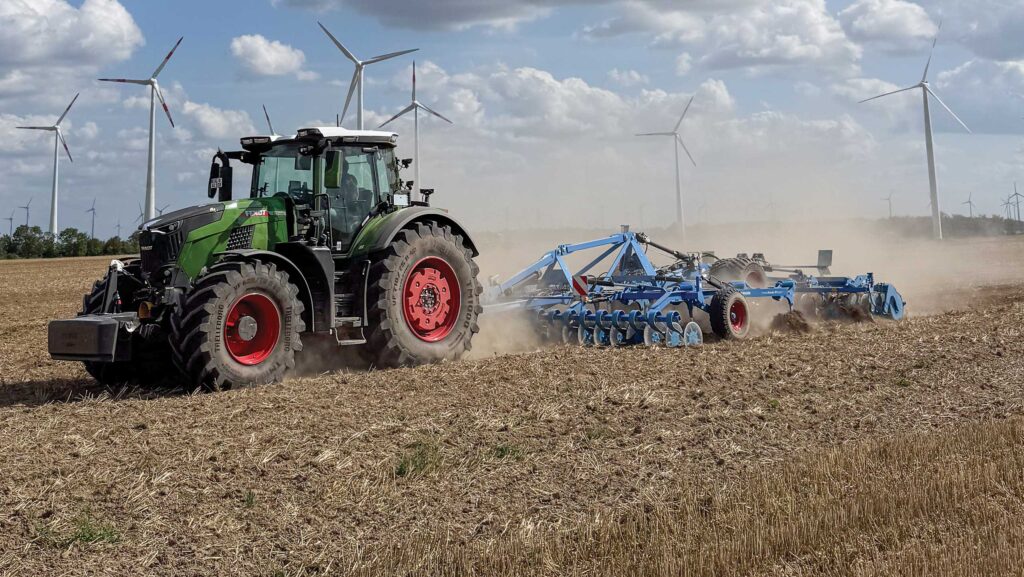
© Adam Clarke
Finding its place
The old 800s had been in limbo following the introduction of the Gen7 700-series tractors in 2022, with the more technologically advanced 280hp 728 model leaving a relatively short bridge to the 296hp 930.
Its versatility has proved a big hit, casting a shadow over the 800 S4 range that was only intensified by the major issues with the 6-litre Deutz power unit.
They were related to the exhaust gas recirculation (EGR) system introduced with Tier 4 Final updates.
Ed Dennett is the firm’s retail market manager for north-west Europe.
He tells Farmers Weekly that despite the enlarged 700s encroaching on what was 800-series territory, the company is conscious that some customers still consider the 700 too small and 900 too big for their operations.
“This new 800-series gives us a little bit more lift capacity, torque and traction than the 700, without the weight that you get from 900-series tractors,” he says.
“There are customers that are closely monitoring ground pressures and compaction now, and this is going to fit the bill for them in that gap between our ranges.”
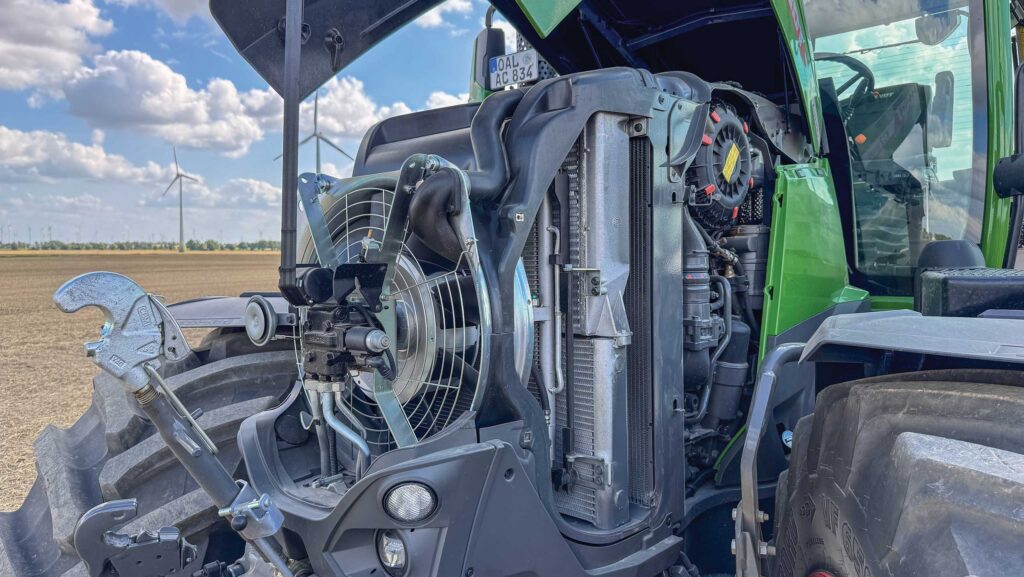
© Adam Clarke
New power plant
The most significant change is the engine, with Agco Power’s six-cylinder, 8-litre Core80 engine, launched earlier this year, replacing the previous 6-litre Deutz block.
This is accommodated in a new chassis that is 7cm longer than before.
It is tuned to 260, 290, and 320hp in the appropriately named 826, 829, and 832 Varios, and all get Fendt’s “dynamic performance” system that can add up to 23hp to those outputs.
Rather than providing a “boost” function in the traditional sense, it offers some extra headroom to run ancillary functions without affecting the primary tasks of traction and pto output.
Exhaust gas after-treatment is via a diesel oxidation catalytic converter, particulate filter and selective catalytic reduction.
Fendt says that going without EGR ensures there’s always fresh air in the engine and the whole system requires less cooling, ostensibly improving both reliability and efficiency.
The 800s’ transmission is the company’s TA250 VarioDrive, common to the 900- and 1000-series, offering permanent, independent four-wheel drive.
This means its two pumps distribute power to the front and rear axles separately of one another.
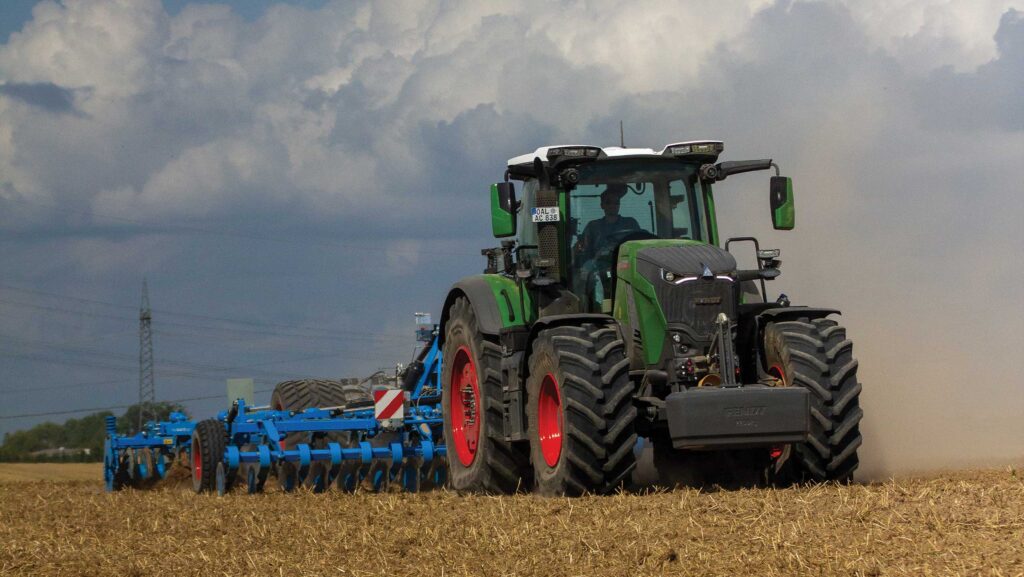
Fendt 800 © Adam Curtis
Pull-in turns
One of the advantages of the system is its ability to pull the tractor into a turn without torsion, reducing soil compaction and minimising the turning circle.
Another feature originally introduced on the 1000-series is the Fendt iD concept to deliver high torque at low speeds.
The rated engine speed is 1,700rpm, but the main working range is 1,100 to 1,400rpm and the flagship 832’s maximum 1,680Nm is available from 1,200rpm.
New options include a reverse function on the cooling system, which means operators can expect to spend less time using a compressor line, and automatic engine and cab air filter cleaning systems.
Fendt says it has made efforts to reduce engine and drivetrain maintenance costs, as well.
It has extended the first engine oil service interval from 50 to 500 hours, and transmission oil intervals from 2,000 to 4,000 operating hours, or four years.
Bigger payload
Two of the key aspects of the redesign are the higher payload and flexible hydraulic remote options.
An operating weight of 9.9t, with a permissible overall weight of up to 17.5t at a maximum speed of 50kph, makes for a payload of 7.6t.
By comparison, the outgoing 800s had an operating weight of 9.4t, overall weight of 16t and payload of 6.6t, so there is now more flexibility on road-legal front and rear implement combinations and ballast options.
For the hydraulics, there is now a maximum of six spools at the rear and two at the front, and customers have the choice of three pump configurations.
For lighter hydraulic work, a 165-litre/min setup may suffice, or there’s a 220-litre/min version for those requiring more flow.
For the heaviest applications, customers can spec the tractors with both the 165- and 220-litre/min pumps to give a total of 385 litre/min.
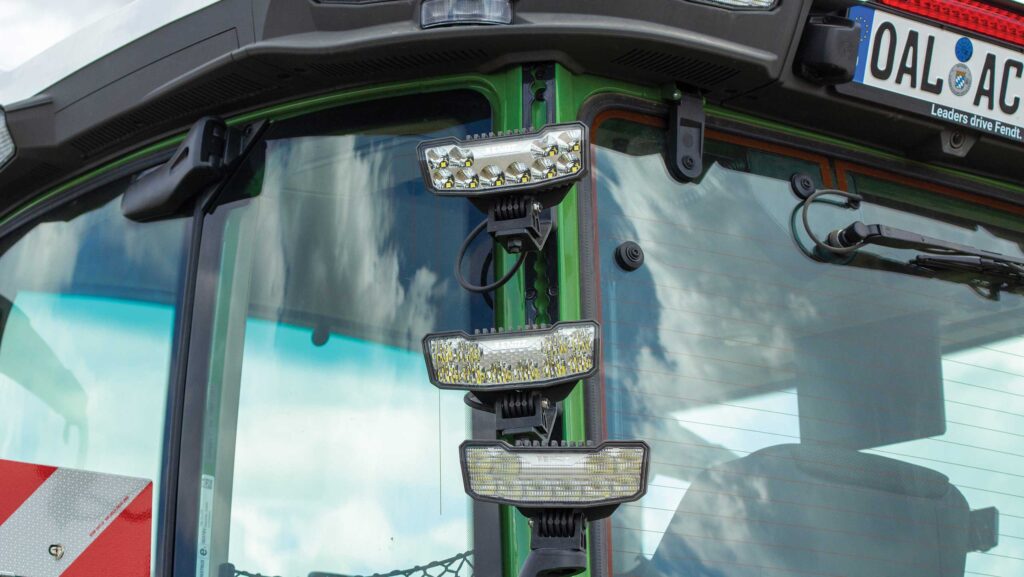
LED lights are controlled by a touchscreen © Adam Clarke
Bright lights
There are two new LED lighting options, both offering either eight or 12 spotlights integrated into the cab roof.
The higher spec “ultra vision” delivers 4,400 lumens a spotlight (the lesser “vision” version is 1,000 lumens a light).
These are dimmable in five stages to avoid glare when multiple machines are working in the same area.
A rail can be installed on the cab pillars to the rear, which can carry an additional two work lights a side, and there are also optional “ground vision” drawbar lights.
These are integrated into the lower end of the rear fenders and throw light rearwards to a baler pick-up or to illuminate the back-end when hitching up an implement.
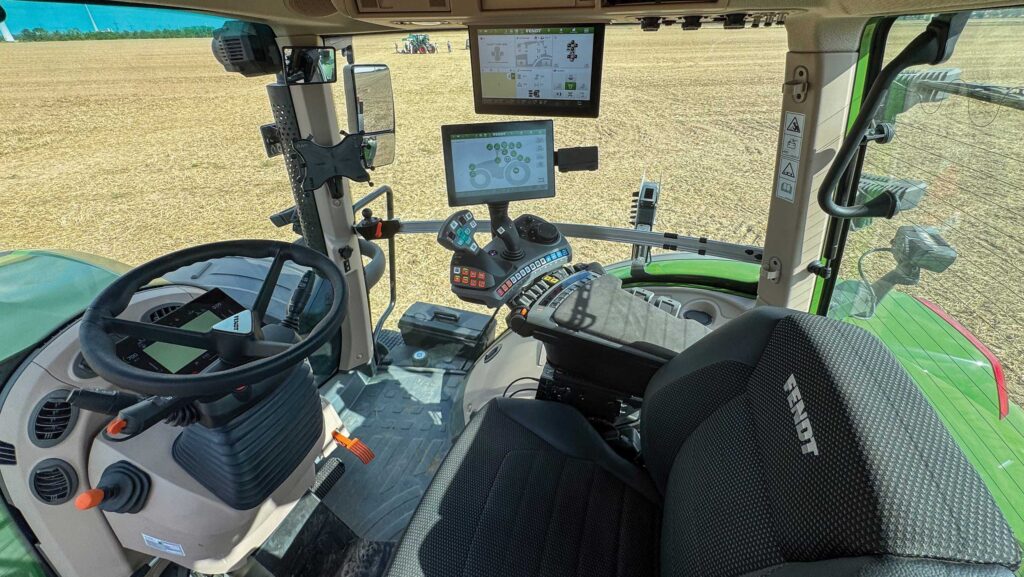
© Adam Clarke
Operator comfort
All models have the Fendt One workstation with up to three displays on the Profi and Profi+ iterations.
Extra features include a 12-litre cool box, footrests and a heated, laminated safety glass windscreen for faster defrosting and shatterproof protection.
Apple CarPlay will be integrated into tractor software from June 2026.
The new seat has a plethora of options and adjustments, including climate control, multi-stage heating, four-way lumbar support, adjustable side bolsters and massage functions.
Fendt’s high-speed guidance is also available for working at up to 40kph, instead of the standard 25kph.
While this is largely aimed at the big and flat farms of the Americas and Australia, it might have appeal to UK contractors mowing thin grass swards.
List prices for the 800-series Gen5 start at £313,403 for the 826, £326,893 for the 829 and £341,950 for the flagship 832.

